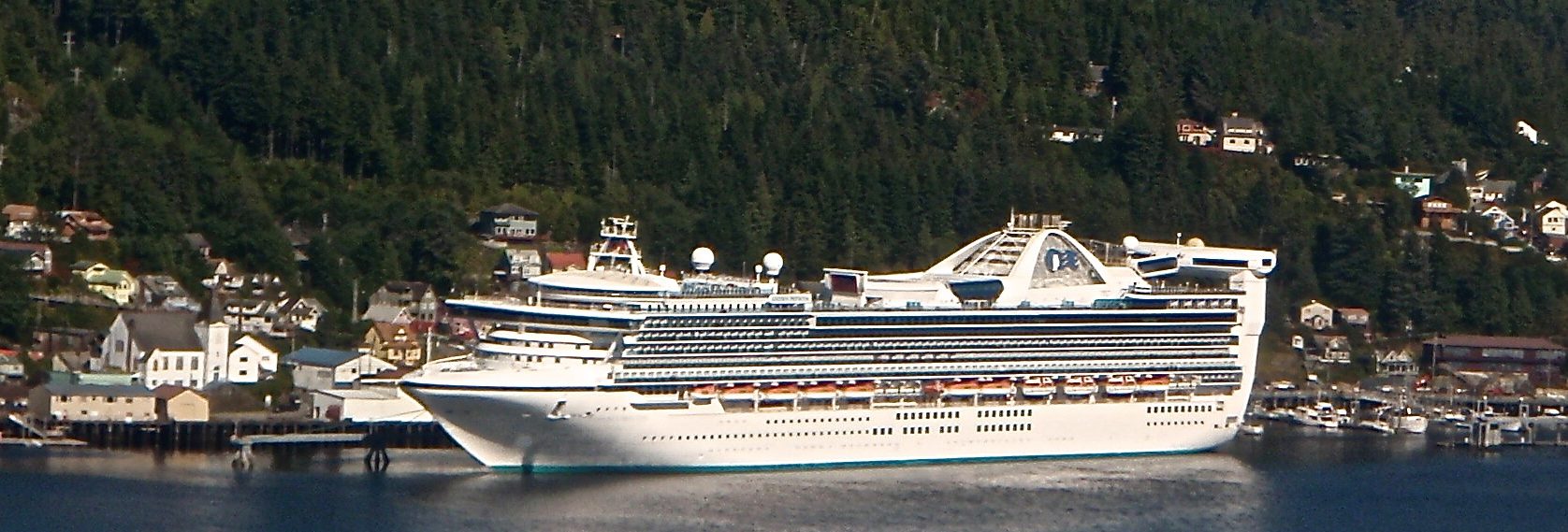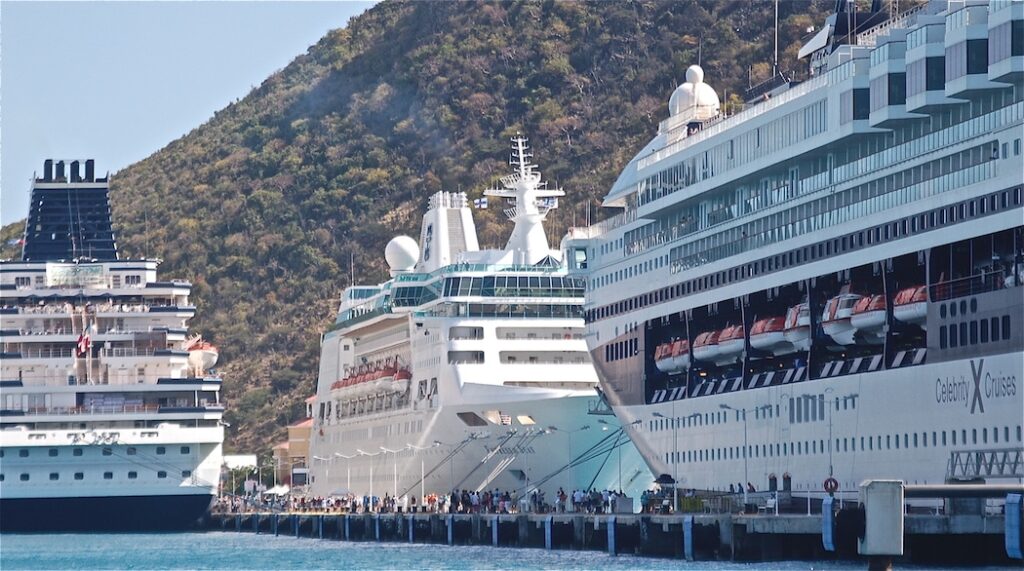Cruise critic Ross Klein argues that now is the time for port cities to gain control of cruise tourism crowds, explaining three ways to do that – and why it won’t be easy. But if not now, when?
OPINION – Re-imagining Cruise Tourism, Post-Pandemic
The COVID-19 pandemic has given port cities an opportunity to reflect on the impacts of cruise tourism, both positive and negative. At the same time, the cruise industry has been forced to in effect reset. It begrudgingly ceased cruise operations and since April 2020 has floated many restart dates; few have materialized and only in limited markets. Many countries closed cruise tourism through 2021; some like the U.S. expect to reopen November 2021 at the earliest. In the interim, there have been changes in the cruise industry – ships have been scrapped or sold, some cruise lines have ceased operations, other cruise lines have been sold.
The largest cruise corporations will return streamlined, more efficient, and with a revised business model corresponding to the new operating environment – they will seek to increase revenues while decreasing expenses. This negatively impacts ports as they are asked to give more to cruise lines in return for receiving less. The challenge for a port community is to have the cruise market align with its values and requirements rather than sacrificing its interests to align with the demands of the cruise industry.

Port communities can use the respite from cruise tourism to think rationally about the ideal scope, size, and nature of day trippers from cruise ships. In post-Covid-19, the first issue is public health – keeping cruise tourism safe. What public health measures must be in place in a port and for arriving cruise ship day-trippers – e.g., masks, social distancing, vaccinations. Public health measures should be defined by health authorities in the port community; not by cruise ships.
Three opportunities come with the break in cruise tourism.
Traffic Taming – One is to rebuild cruise tourism in a size that “fits” the port community. People pollution (when the number of tourists overtakes the comfortable carrying capacity of a port) was first recognized by the cruise industry as a problem in the late-1990s and has become worse in the past 20+ years. Port communities, especially historic locations, take the brunt of the growing over-tourism associated with cruise ships. Some ports have taken measures to contain cruise tourism, including:
-
- Dubrovnik’s “Respect the City Campaign” that caps cruise visitors at 4,000 per day. This is a significant reduction from the peak days when the port saw a million or more passengers in a year (2012, 2013); but it still results in a significant potential traffic load. Twenty-six cruise days a month can result in more than 100,000 passengers a month.
- Venice, in response to social and political action, initially limited cruise ship size and now has banned cruise ships from the Lagoon and the St. Mark’s Square area.
- Key West replaced previous limits on cruise passengers – limits that had been systematically violated over the years – with limits on ship size (1,300 passengers and crew) and total passengers allowed ashore (1,500 per day). The limits were the result of a public vote in November 2020. Almost immediately, the Cruise Lines International Association (CLIA) and its friends in the Florida legislature began steps to disenfranchise the will of the citizens of Key West and Monroe County.

Baseline Research – Second, the respite from cruise tourism gives a port community a unique chance to measure baselines because cruise ships are absent. Some ports have already used the break to measure water and air quality as a point of comparison to the past and for the future; others are asking whether seasonal “red tides” along cruise routes return when there are no cruise ships. Measures can also be taken ashore – social indicators, economic indicators, and indicators of quality of life, though these need to be understood in the context of Covid-19 and its impact on tourism and commerce generally.
The point is that ports have a chance to systematically understand the impacts – positive and negative – of cruise ships. It is possible to measure the impact of cruise tourism on infrastructure (garbage, sewage use and treatment, road maintenance and sidewalks, parks and public areas) and on the costs of operating as a destination (e.g., increased need for police and public safety personnel, other public employees in many areas). Knowing the increased cost of public services when cruise tourism is active gives a concrete base on which a port community can know the minimum income needed in port fees and passenger head taxes from cruise ships.

Define the Future – Last, a port can restart cruise tourism in a mindful manner following the respite. There is a chance to define the number of passengers that fit the port (daily and weekly) rather than being faced with volumes foisted on the port by cruise lines. There is a chance to create parameters for cruise tourism that reflect systematic knowledge about environmental, social and economic impacts. The best chance of all is to intentionally define cruise tourism going forward (e.g., how many ships, how many passengers, and controlling the cruise ship schedule) and to treat it as a business (as reflected in port fees, passenger head taxes, taxation of cruise business conducted ashore, taxation of alcohol-sales and casinos while a ship is in port). Cruise lines are all in business to make money, which potentially places them in competition with a port community that also sees itself in business to make money. Cruise lines often see money spent ashore as lost income. This is the core of the competition. The cruise industry has traditionally dominated its relationship with ports. The respite from Covid-19 gives a chance to resume with a more equitable and fair relationship.
Ports now have a chance to ensure that cruise tourism truly benefits the community, and to avoid people pollution and other social and environmental costs.
 Ross A Klein, PhD is an international expert on the cruise industry and cruise tourism. His writing includes 10 books and monographs and more than four dozen book chapters and articles. He has lectured widely and has testified before the U.S. Congress and in numerous court cases involving the cruise industry. He is online at http://www.cruisejunkie.com
Ross A Klein, PhD is an international expert on the cruise industry and cruise tourism. His writing includes 10 books and monographs and more than four dozen book chapters and articles. He has lectured widely and has testified before the U.S. Congress and in numerous court cases involving the cruise industry. He is online at http://www.cruisejunkie.com


One Response
Just a comment to the interesting piece on tourism:’The Norwegian government has decided to ban ships whose emissions exceed new and stricter environmental rules from the Unesco Western fjords, which include the iconic Geiranger and Nærøy fjords – for most cruise passengers the top attractions of a Nowegian cruise itinerary. The law will go into effect 2026. This means that the larger cruise ships would have to use tenders to carry passengers into the fjords.
Since it makes little sense to give polluting vessels access to all other Norwegian fjords, the government is now in the process of drafting a law to that effect. Whether this decree will become law by 2026, or by 2030, remains to be seen.
Regardless, fjord tourism in Norway will take on a new profile, most likely in the direction of a higher percentage of smaller Expedition category vessels carrying fewer than 1 000 passengers. An example of this is the Hurtigruten class ships, a company that has served the Norwegian coast for more than 100 years, carrying cargo and passengers from the main ‘cruise gateway’ of Bergen, crossing the polar circle on its way north to the border of Russia, calling on 34 ports along the way on its round trip.
Arild Molstad